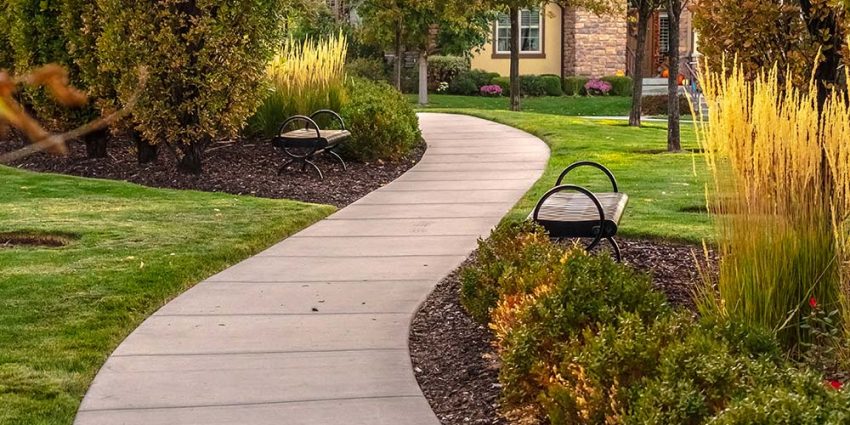Walkway Design: Crafting Pathways That Enhance Function and Aesthetics
Walkways are more than just practical elements in landscape design; they are the threads that connect spaces, guiding foot traffic while adding to the overall aesthetic of a property. A well-designed walkway can transform a garden, enhance curb appeal, and provide a safe, functional path for movement. This article delves into the key considerations for designing an effective and attractive walkway, exploring various materials, styles, and design tips to help you create pathways that are both beautiful and functional. If you want to know more about walkway design visit here.
The Purpose of Walkways
Walkways serve several essential functions in landscape design:
- Navigation: They provide a clear path for pedestrians, guiding them from one area to another while reducing the impact on the surrounding landscape.
- Safety: Walkways offer a stable surface, reducing the risk of accidents caused by uneven ground or slippery surfaces.
- Aesthetic Appeal: They can enhance the visual appeal of your outdoor space, contributing to the overall design and creating a welcoming atmosphere.
Key Considerations for Walkway Design
- Purpose and Traffic Flow
The first step in designing a walkway is to determine its purpose and expected traffic flow. Consider the following:
- Usage: Will the walkway be used for heavy foot traffic, or is it a decorative feature? For high-traffic areas, durability and ease of maintenance are crucial.
- Function: Identify the primary function of the walkway—whether it’s to connect the front door to the driveway, link different garden areas, or create a scenic route through your landscape.
- Material Selection
The choice of materials can significantly impact both the functionality and appearance of your walkway. Here are some popular options:
- Concrete: Durable and versatile, concrete walkways can be poured in various shapes and stained or stamped for decorative effects. It’s a great choice for modern or minimalist designs.
- Brick: Classic and timeless, brick walkways offer a charming aesthetic with a variety of patterns and colors. They are durable but require occasional maintenance to replace damaged bricks.
- Stone: Natural stone, such as flagstone or slate, provides a rustic, elegant look. Stone walkways are durable and blend well with natural landscapes, but they can be more expensive and labor-intensive to install.
- Gravel: Gravel walkways are cost-effective and easy to install. They offer a casual, informal look and allow for excellent drainage but may require edging to keep gravel in place and regular replenishing.
- Design and Layout
The design and layout of your walkway should complement the overall landscape and architecture of your property. Consider these design elements:
- Shape and Pattern: Walkways can be straight, curved, or a combination of both. Curved walkways often create a more natural, inviting feel, while straight paths can be more formal and direct.
- Width: Ensure the walkway is wide enough to accommodate foot traffic comfortably. A width of 3 to 4 feet is generally suitable for most pathways, allowing two people to walk side by side.
- Edging: Edging materials, such as stone, metal, or brick, can define the walkway’s boundaries and prevent materials from spilling into garden beds or lawns.
- Integration with Landscaping
Integrating your walkway with the surrounding landscape can enhance both its functionality and aesthetic appeal. Consider these tips:
- Plantings: Incorporate plants along the edges of the walkway to create a lush, inviting atmosphere. Choose low-maintenance plants that won’t obstruct the path.
- Lighting: Install pathway lighting to improve safety and extend the usability of the walkway into the evening. Solar lights, LED fixtures, or lanterns can add charm and functionality.
- Water Features: Integrate water features, such as small fountains or ponds, to add visual interest and create a tranquil ambiance along the walkway.
- Maintenance and Durability
Consider the long-term maintenance requirements of the materials you choose. Concrete and stone are low-maintenance but may require occasional cleaning or sealing. Brick and gravel may need more frequent upkeep to address issues like shifting or weed growth.
Practical Tips for Walkway Installation
- Prepare the Site: Excavate the area to remove grass and debris. Ensure a level base for proper installation and drainage.
- Consider Drainage: Incorporate proper drainage solutions to prevent water accumulation and potential damage to the walkway. Install gravel or sand as a base layer to facilitate drainage.
- Ensure Stability: Use a stable sub-base material and compact it thoroughly to prevent settling and shifting of the walkway materials.
- Seek Professional Help: For complex designs or large-scale projects, consider hiring a landscape professional to ensure proper installation and achieve the desired results.
Conclusion
A well-designed walkway not only enhances the functionality of your outdoor space but also contributes to the overall aesthetic appeal of your property. By considering factors such as purpose, material selection, design, and integration with landscaping, you can create a pathway that is both beautiful and practical. Whether you opt for a classic brick path, a modern concrete walkway, or a natural stone route, the right walkway design will improve navigation, safety, and the enjoyment of your outdoor spaces.







